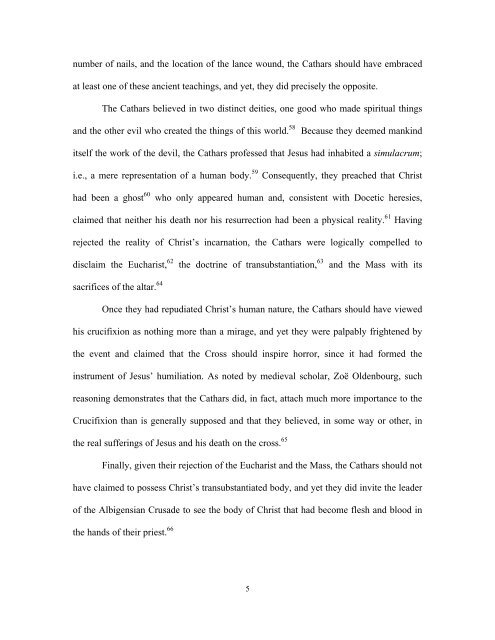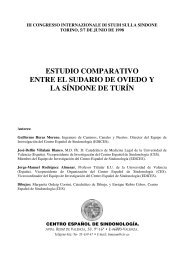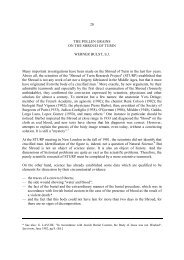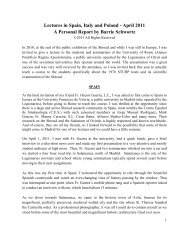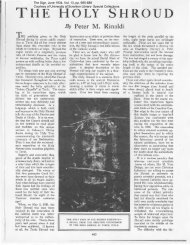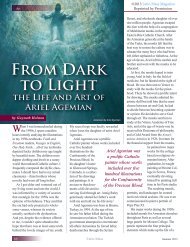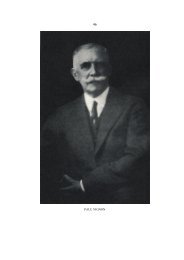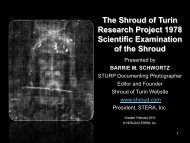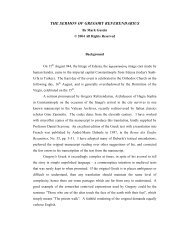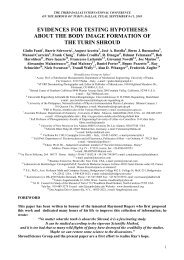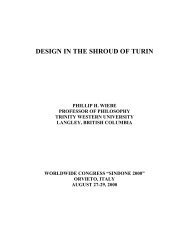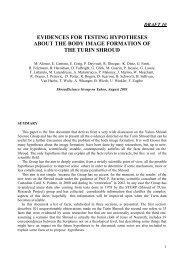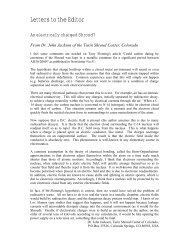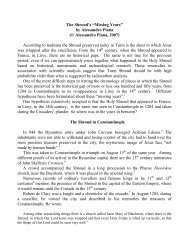the cathar crucifix - The Shroud of Turin
the cathar crucifix - The Shroud of Turin
the cathar crucifix - The Shroud of Turin
Create successful ePaper yourself
Turn your PDF publications into a flip-book with our unique Google optimized e-Paper software.
number <strong>of</strong> nails, and <strong>the</strong> location <strong>of</strong> <strong>the</strong> lance wound, <strong>the</strong> Cathars should have embraced<br />
at least one <strong>of</strong> <strong>the</strong>se ancient teachings, and yet, <strong>the</strong>y did precisely <strong>the</strong> opposite.<br />
<strong>The</strong> Cathars believed in two distinct deities, one good who made spiritual things<br />
and <strong>the</strong> o<strong>the</strong>r evil who created <strong>the</strong> things <strong>of</strong> this world. 58 Because <strong>the</strong>y deemed mankind<br />
itself <strong>the</strong> work <strong>of</strong> <strong>the</strong> devil, <strong>the</strong> Cathars pr<strong>of</strong>essed that Jesus had inhabited a simulacrum;<br />
i.e., a mere representation <strong>of</strong> a human body. 59 Consequently, <strong>the</strong>y preached that Christ<br />
had been a ghost 60 who only appeared human and, consistent with Docetic heresies,<br />
claimed that nei<strong>the</strong>r his death nor his resurrection had been a physical reality. 61 Having<br />
rejected <strong>the</strong> reality <strong>of</strong> Christ’s incarnation, <strong>the</strong> Cathars were logically compelled to<br />
disclaim <strong>the</strong> Eucharist, 62 <strong>the</strong> doctrine <strong>of</strong> transubstantiation, 63 and <strong>the</strong> Mass with its<br />
sacrifices <strong>of</strong> <strong>the</strong> altar. 64<br />
Once <strong>the</strong>y had repudiated Christ’s human nature, <strong>the</strong> Cathars should have viewed<br />
his <strong>crucifix</strong>ion as nothing more than a mirage, and yet <strong>the</strong>y were palpably frightened by<br />
<strong>the</strong> event and claimed that <strong>the</strong> Cross should inspire horror, since it had formed <strong>the</strong><br />
instrument <strong>of</strong> Jesus’ humiliation. As noted by medieval scholar, Zoë Oldenbourg, such<br />
reasoning demonstrates that <strong>the</strong> Cathars did, in fact, attach much more importance to <strong>the</strong><br />
Crucifixion than is generally supposed and that <strong>the</strong>y believed, in some way or o<strong>the</strong>r, in<br />
<strong>the</strong> real sufferings <strong>of</strong> Jesus and his death on <strong>the</strong> cross. 65<br />
Finally, given <strong>the</strong>ir rejection <strong>of</strong> <strong>the</strong> Eucharist and <strong>the</strong> Mass, <strong>the</strong> Cathars should not<br />
have claimed to possess Christ’s transubstantiated body, and yet <strong>the</strong>y did invite <strong>the</strong> leader<br />
<strong>of</strong> <strong>the</strong> Albigensian Crusade to see <strong>the</strong> body <strong>of</strong> Christ that had become flesh and blood in<br />
<strong>the</strong> hands <strong>of</strong> <strong>the</strong>ir priest. 66<br />
5


